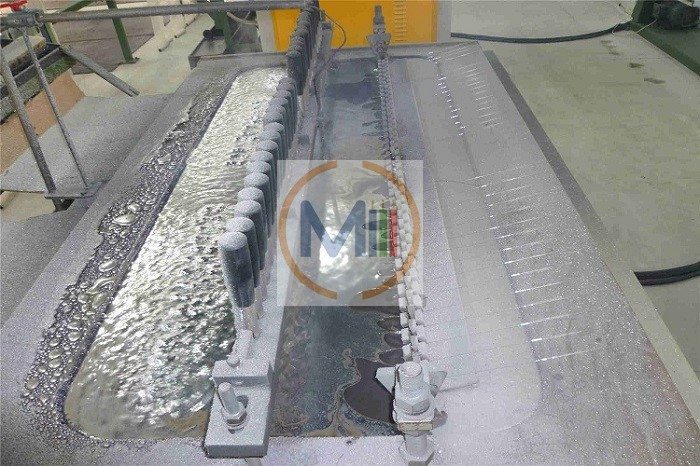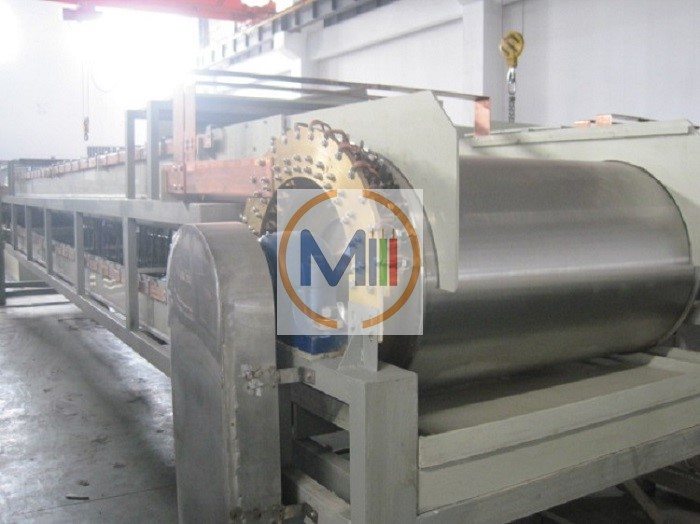Hot Dip Tinning vs. Electroplating Tinning: What Are The Differences?
1.Why does copper wire need tinning?
1-1. Enhance copper wire’s weldability and oxidation resistance.
Prevent copper from being oxidized when exposed to air to form a patina film (chemical formula CU2(OH)2CO3). The patina, on the other hand, is poorly conductive and increases resistance. Tin-plated copper wire can prevent redox reactions.Tin-plated can also increase heat dissipation, can improve electrical conductivity and weldability.
1-2. Increase the obstacle avoidance between copper wire and insulation layer.
Tinned copper wire is mainly used for rubber-insulated mining cables, flexible cables, marine cables, etc. as conductive cores, and as outer shield braid. Tin plating of copper wires can prevent the insulating rubber from sticking, the wire core becomes black and brittle, and improves its weldability. For example, in the vulcanization process of copper wire, the copper wire will react with sulfur in the rubber to make the rubber sticky, which will shorten the service life of the copper wire.
2. What are the differences between two tinning ways?
2.1 Hot dip tinning way
Immerse the copper with a clean surface in the molten tin solution at high temperature (the solid tin is melted by heating), and use the physical reaction at the interface to strengthen and form a layer of tin on the surface through extrusion. process. Hot-dip plating is a kind of physical processing.
2.2 Plating tinning way
Using the principle of electrolysis, the process of attaching a layer of crystalline tin atoms to the metal surface of the base material through electric molecules. This process requires positive and negative electrodes as power media. It is the principle of electroplating solution, electrode and chemical reaction, and electrodeposition process. Electroplating is a kind of chemical processing.
3. Advantages and disadvantages of two tinning methods.
3.1 Hot dip tinning method
1) Physical processing, controllable production process, low scrap rate, and low cost.
2) The welding performance is good, the process is simple and short, and the delivery time is short.
3) Good reflectivity, looks more beautiful.
4) Small environmental pollution.
5) The Tin layer is not easy to control, and the continuity and adhesion are relatively poorer than those of the electroplating line.
6) The uneven tin layer thickness causes the surface of the wire body to be uneven, and the storage time is limited.
7) It is impossible to overcome the existence of tin ash, and it is easy to block the eye mold and break the wire in the next production process.
3.2 Electroplating method
1) The surface is smooth and clean, without particles, and there is no tin powder.
2) The coating is uniform, with good concentricity and no eccentricity.
3) Consistent wire diameter and high roundness.
4) The thickness of the tin layer is controllable, and it has good welding performance and electrical performance.
5) The tin layer is stable and the storage time is long.
6) The operation of the electroplating solution is complicated, and the production process requires high chemical technology.
7) Environmental pollution.
4.How to choose?
4-1. As a customer
If a thicker coating is required or the wire gauge is relatively small such as 0.15-0.32mm, then hot-dip plating is more suitable.On the contrary, you can choose an electroplated tin wire.
4-2. As a producer
An electroplating process is more cost-effective when coating a large number of thin wires. For example, 1.6-1.8mm wire is electroplated, and then directly drawn into small size by a Multiwire Drawing Machine. However, this production process has high upfront investment costs and has high requests for chemical formula technology.Therefore, how to choose is determined by a number of concerns and requirements.
Understanding the differences will help you choose the right method.
Click here to learn more details about the two types of tinning processes.
NOTE: All rights reserved, Reprinting is prohibited without permission.


